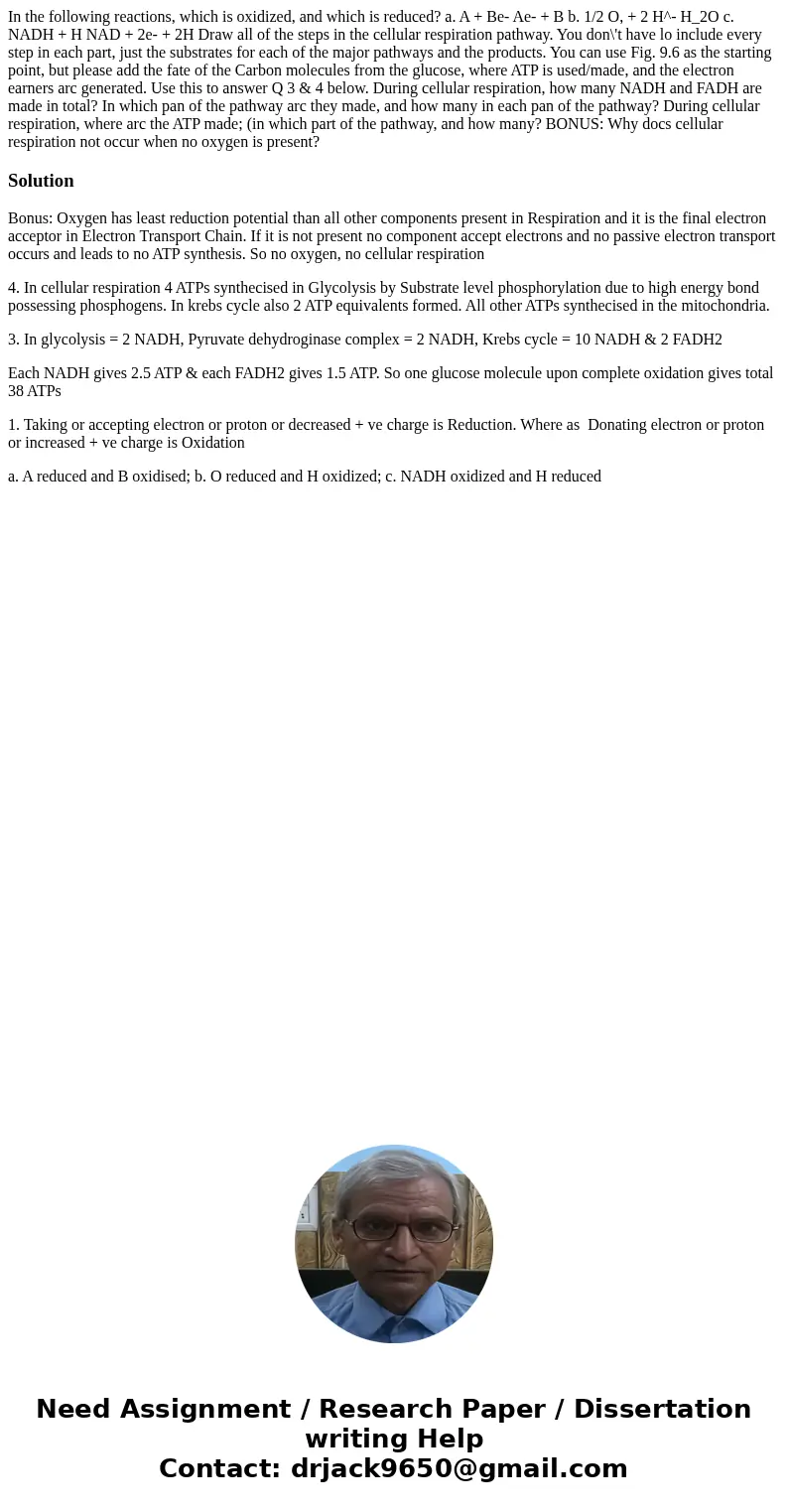In the following reactions which is oxidized and which is re
Solution
Bonus: Oxygen has least reduction potential than all other components present in Respiration and it is the final electron acceptor in Electron Transport Chain. If it is not present no component accept electrons and no passive electron transport occurs and leads to no ATP synthesis. So no oxygen, no cellular respiration
4. In cellular respiration 4 ATPs synthecised in Glycolysis by Substrate level phosphorylation due to high energy bond possessing phosphogens. In krebs cycle also 2 ATP equivalents formed. All other ATPs synthecised in the mitochondria.
3. In glycolysis = 2 NADH, Pyruvate dehydroginase complex = 2 NADH, Krebs cycle = 10 NADH & 2 FADH2
Each NADH gives 2.5 ATP & each FADH2 gives 1.5 ATP. So one glucose molecule upon complete oxidation gives total 38 ATPs
1. Taking or accepting electron or proton or decreased + ve charge is Reduction. Where as Donating electron or proton or increased + ve charge is Oxidation
a. A reduced and B oxidised; b. O reduced and H oxidized; c. NADH oxidized and H reduced

 Homework Sourse
Homework Sourse